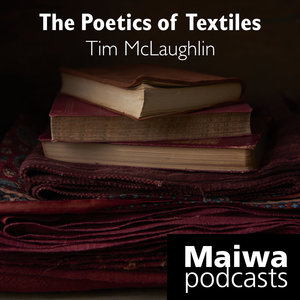
We were deeply saddened to receive the news that Henri Lambert has recently died of a sudden heart attack.
Henri together with is wife Denise was instrumental in leading a revival of woad dye. Henri, who became enamored with the shades of European blue derived from woad, devoted his life to learning the chemistry and science of this dye. The spirit of exploration and a deep curiosity motivated him. Together with Denise the couple was able to use woad in unimaginable ways - in everything from Henri's eyeglass frames to the paint that adorned the Lambert's car.
Only a few months ago, in October of 2009, Henri was in Vancouver with Denise giving a lecture and a workshop. Maiwa carries woad dye from the Lambert's shop, Bleu de Lectoure, and some of the unique woad products that Henri helped create. Many will recall the impact of the subtle shades of blue that graced the stage this fall during the Lambert's presentation at the Slow Clothes Fashion Show. We greatly enjoyed the Lambert's enthusiasm and commitment. We loved Henri's generous spirit and gentle humour.
In addition to his talents as a scientist, researcher and entrepreneur, Henri was a skilled artist. Many of his canvases hang in the gallery/shop in Lectoure and we had the good luck to see them during our visit in 2007.
The natural dye and textile communities have suffered a great and irreplaceable loss with the passing of Herni Lambert. We extend our sympathies to Denise and wish her strength during this difficult time.
Comments are welcome.






















